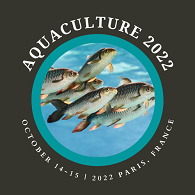16th International Conference on Aquaculture & Marine Biology
Paris, France

Nyan Taw
Shrimp Aquaculture Consultant (Former; Chief Technical Advisor & Consultant for FAO projects of the UN and WB)
Title: Various intensive shrimp farming systems in Asia: Commercial implementation of biofloc and RAS production systems help control shrimp farming diseases
Biography
Biography: Nyan Taw
Abstract
Before the mid-1990s, the major diseases affecting the farmed shrimp industry were of bacterial origin. But in Asia and from late 1994, the appearance of various, major viral diseases – like White Spot Syndrome Virus (WSSV), Yellow Head Virus (YHV), Infectious Myonecrosis Virus (IMNV) and others – led to changes in the design and operation of some shrimp farms to help prevent outbreaks and dissemination of viral diseases. More recently, WSSV outbreaks in Saudi Arabia in farming operations for Indian white shrimp (Penaeus indicus) provided more evidence that additional biosecurity was needed. And since 2009, outbreaks of a new bacterial disease, Acute Hepatopancreatic Necrosis Syndrome (AHPNS) – which started in China and spread to Asia and later Central America in 2015 – has caused losses of billions of dollars. In Australia WSSV outbreak in early 2017 at black tiger shrimp (Penaeus monodon) farms provide additional evidence for the need to change shrimp production systems.
Because of old and newly emerging viral and bacterial diseases affecting their farmed shrimp industry, some years ago various Asian countries started developing and using biofloc and recirculation aquaculture system (RAS) production technologies and/or treating incoming water for culture operations and wastewater treatment as biosecurity measures for disease prevention and control. Many production systems are used by Asian shrimp growers – from single-pond base management to larger RAS systems – but many have yet to reduce their environmental impact due to their wastewater discharges.
Examples of different biofloc and recirculation aquaculture (RAS) shrimp farming systems used in Asia in the last two decades, including some of the projects I have personally been involved with and provided technical expertise, as well as some perspectives on these technologies are provided. Large integrated shrimp farms in Indonesia: Dipasena group in Lampung, PT CPB in Lampung and PT SAJ in Sumbawa and Blue Archipelago Bhd projects in Kedah and Terengganu in Malaysia.
In any aquaculture business, sustainability of a system can improve profits. With emerging disease problems, treating wastewater discharged from farming facility or RAS is of utmost important. What investors, shrimp farmers and technicians need to be aware of is that, whatever waste is discharged into the environment, it will likely com/e back to you in the form of disease sooner or later.

